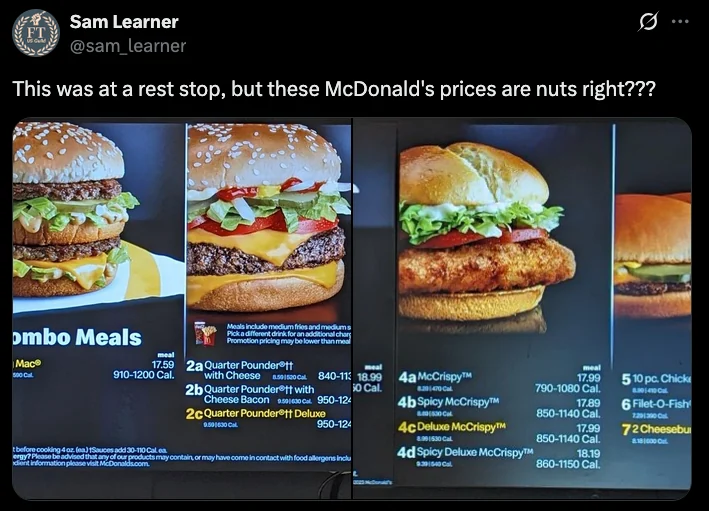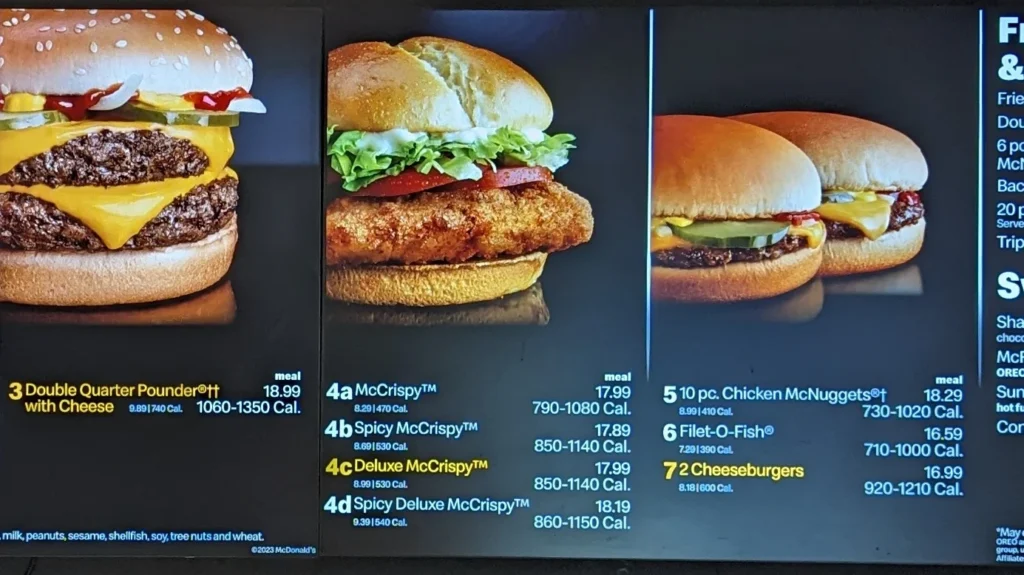Internet meltdown over an $18 big mac finally forced companies to admit they might’ve gone too far

It all started with a viral post on X showing an $18 Big Mac combo at a Connecticut rest stop, which had the internet fuming and fast food fans spiraling.


Nearly a year later, McDonald’s USA President Joe Erlinger finally weighed in, setting the record straight in a letter that tried to cool the fire. According to Erlinger, that eye-popping $18 meal was an “exception,” not a national trend across the company’s 13,700 restaurants. The actual average price? $9.29, backed by a fact sheet sent out with the letter.
But here’s the thing: the truth didn’t really matter. That $18 post hit a nerve, and not just because it went viral. It became the symbol of rising frustration over what fast food costs in 2025. That anger wasn’t just about one menu item; it was about people feeling priced out of something that used to feel affordable.
And McDonald’s noticed. A few weeks after Erlinger’s PR clean-up job, the company introduced a $5 value menu. The timing? Absolutely intentional.
This wasn’t always the playbook. After the pandemic, fast food giants had a good run – raising prices with little resistance. Executives even bragged about it on earnings calls, celebrating how easy it was to pass higher costs to customers.
Sure, their costs rose too. Labor, supply chains, inflation – it all added up. But despite that, profits grew, thanks to consumers who were flush with stimulus cash, higher wages, and pandemic savings.
Now the momentum is shifting. McDonald’s is suddenly on the defensive, caught between past decisions and present frustrations. The tone has changed. The message now is: We hear you. We understand. But don’t paint us as villains.
“The average price of a Big Mac in the US was $4.39 in 2019,” Erlinger wrote in his letter. “Despite a global pandemic and historic rises in supply chain costs, wages and other inflationary pressures in the years that followed, the average cost is now $5.29. That’s an increase of 21% (not 100%),” he added.
Fair point. The Consumer Price Index shows a 23% rise in prices overall since 2019, so the Big Mac isn’t an outlier. And yet, the Big Mac gets the spotlight. Meanwhile, car insurance is up 40% in the same time frame – but no one’s posting viral memes about Allstate.
Maybe it’s because insurance companies never claimed to be the low-cost friend of the working class.
Still, this all feels calculated. That viral post was on Erlinger’s radar early on. So why the year-long silence? Likely because of the numbers. CEO Christopher Kempczinski told analysts that profit margins have dropped back to 2019 levels. Consumer pushback is real. Paychecks aren’t growing as fast. Pandemic savings? Gone. And suddenly, $15 for a burger meal doesn’t feel like a joke anymore – it feels like a burden.
“We certainly are going to be prudent and thoughtful about any further price increases that we’re looking at for the rest of 2025 on that backdrop,” CFO Ian Borden said.
Translation: Expect fewer hikes. The $5 menu isn’t a marketing gimmick – it’s a survival strategy.
And McDonald’s isn’t alone. Major retailers like Target, Walmart, Amazon, Walgreens, and fast food rivals like Wendy’s and Starbucks are cutting prices too. They know the mood is shifting. The loyalty that once came easy is cracking.
Consumers are tired. They’re pushing back. And it’s starting to hit where it hurts most: the bottom line.



